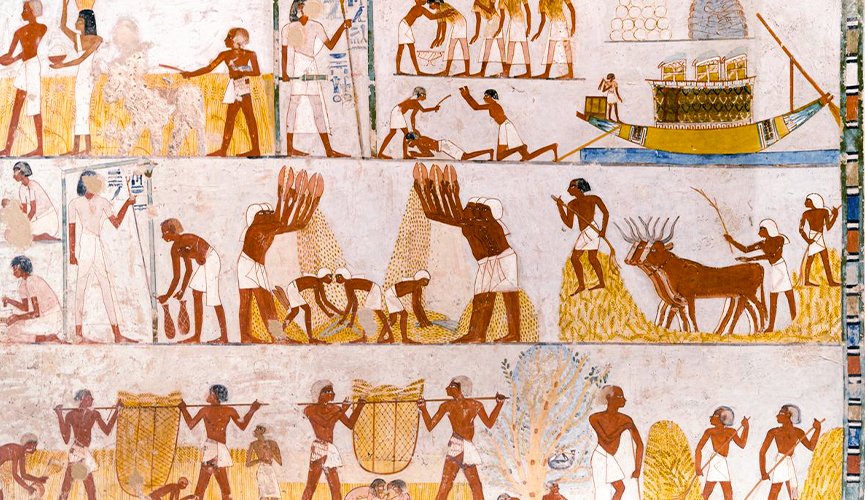Ancient Egyptian Festivals had a mysterious air about them. They weren’t just gatherings of people having fun, though. They were holy times that connected the world of the living to the world of the dead. These gatherings were a mixture of colors, sounds, and traditions that took people to a place where gods and humans danced harmoniously.
In the middle of the endless sands and under the ever-watchful eyes of the heavenly clouds, the land of Ancient Egypt saw a patchwork of fascinating events that tied the human and the divine together. These mysterious and traditional events deeply look into this fantastic society’s cultural, spiritual, and cosmological aspects. As we learn more about history, let’s go on a trip to learn about the complicated and exciting Ancient Egyptian Festivals.
Calendar of Celebration
- The Egyptian Lunar Calendar: Foundation of Festivals: The moon rhythms that ruled earthly and heavenly cycles were at the heart of Egypt’s busy holiday schedule. With the way its months and phases worked together, the Egyptian Lunar Calendar set the stage for many holidays that coincided with important farming events and solar events. As the seasons changed and the Nile’s life-giving waters rose, Egyptians got together to enjoy how life and the universe always started over.
- Agricultural and Solar Alignments: Seasons and Festive Occasions: Ancient Egypt’s holidays were a good mix of farming cycles and the sun’s position in the sky. During the Festival of Inundation, people honored Osiris. This marked the start of the yearly flood of the Nile, a gift from the gods that fed the land and made sure crops were plentiful. In the same way, the Festival of Wepet Renpet marked the beginning of the Egyptian New Year. It brought together the worlds of heaven and Earth to celebrate life and new beginnings.

Religious Underpinnings
The gods and goddesses were central to these celebrations and demanded respect, worship, and awe. The gods and goddesses whose stories were told in the shrines and across the beaches were not far away but took part in people’s lives. These events showed the Egyptians’ devotion and gave a physical form to their spiritual beliefs.
- Gods and Goddesses: Divine Figures at the Heart of Festivals: The Egyptian pantheon of gods and goddesses took center stage at the gatherings, which were full of lively scenes. Whether it was the Opet Festival, which honored Amun, Mut, and Khonsu, or the somber Feast of the Valley, which celebrated and remembered the gods of Thebes, these celebrations showed how people and gods worked together.
- Role of Festivals in Worship and Spirituality: The holidays weren’t just random acts of worship but an essential part of Egypt’s spiritual life. With complicated customs and symbolic gifts, the people participated in a holy dance beyond time and space. These practices were a way to ask the gods for help, show thanks, and confirm the endless connection between humans and gods.
Ancient Egyptian Festivals
Festivals of the Nile
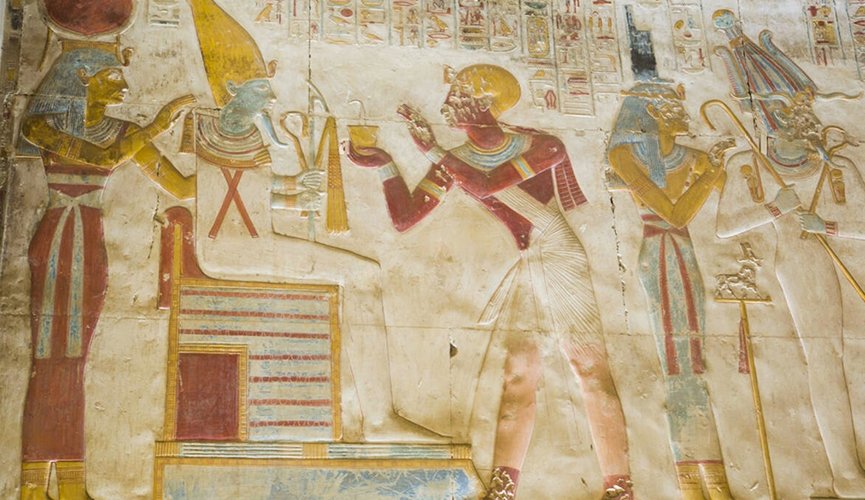
The ebb and flow of the Nile, a river that gives life, was celebrated with celebrations that matched the flow of this mighty river. The Inundation Festival was a happy tribute to the rivers that gave life. It was a celebration of the yearly flood of the Nile, which made the land fertile and helped the people live well. Renpet, the New Year’s Festival, was not just a change in time but also in the whole universe. It was a time when the very fabric of life was rewoven.
Inundation Festival: Honoring the Waters That Give Life
Egyptians got together as the sun went down, and the smell of wet ground filled the air to honor the Nile’s kindness. With joyful processions and gifts, they paid respect to Hapi, the God of the Nile, whose floods kept the land alive and ensured everyone had food. At the event, people came together to show their thanks for what the river had given them.
Wepet Renpet: The Festival of Joy for the New Year
The Festival of Wepet Renpet began a new chapter in the Egyptian calendar. This happened as the stars lined up and the planets danced in space. As the religious group carefully watched the sky and announced the time for change had come, a wave of joy spread through the land. People traded gifts of peace and asked for wishes for the next cycle in temples decked out in beautiful decorations.
Festivals of Myth and Legend
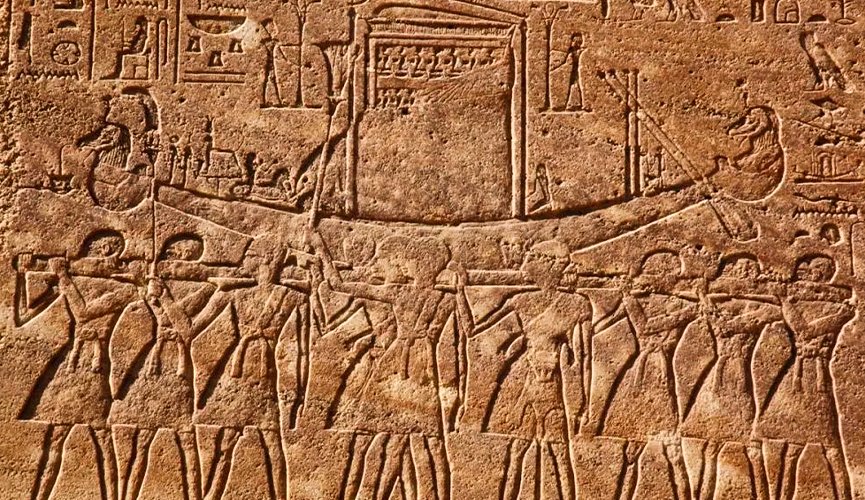
Myths about the old Egyptian gods were linked with their stories. These myths went back in time and into the mind. The events, often based on these myths, made the stories come to life, turning them into tangible experiences that meant a lot to the people who took part.
Opet Festival: Honoring the Sacred Union of Amun, Mut, and Khonsu
The Opet Festival was a big show of loyalty to Amun, the king of gods, and his holy union with Mut, the divine mother, and Khonsu, the moon god. It took place in the middle of Thebes. As a sign of their strong relationship, the gods were brought through the busy streets in elaborate shrines as part of elaborate processions. The event beat was like the cosmic dance of creation, bringing together the holy and the human in a captivating way.
Feast of the Valley: Remembering the Departed and Honoring Theban Deities
At the Feast of the Valley, people whispered blessings and talked about important things to them in the quiet embrace of the desert rocks. This sad event was held yearly in Thebes to celebrate the souls of the dead and show that the living and the future are connected. During the holiday, people made gifts and called on the gods Amun, Mut, and Khonsu, who were seen as guardians of the spiritual world.
Festivals of Renewal
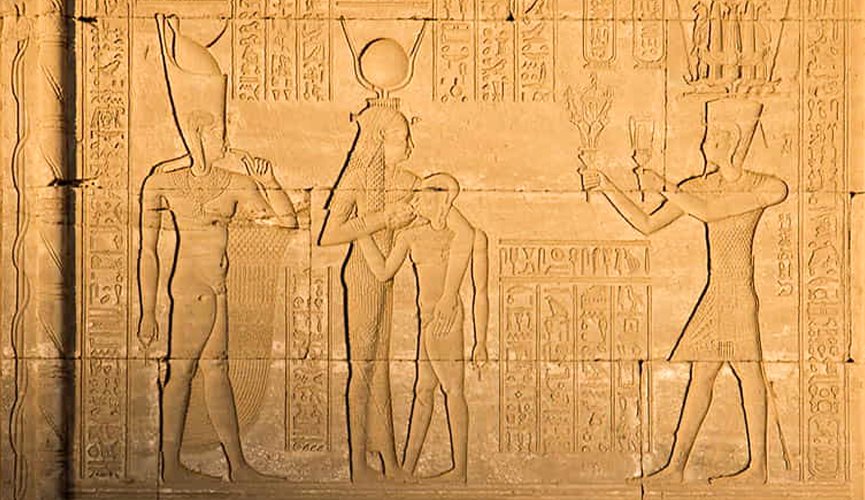
Renewal, both on a personal and global level, was a significant theme in ancient Egyptian festivals. From warding off bad luck to accepting unbridled happiness, these celebrations allowed people to let go of their worries and feel better.
The Burning of Bad Luck: The Lure of the Fires of Set
The dancing flames and sparking embers at the Festival of the Burning of Bad Luck burned away the shadows that remained in hearts and minds. The symbolic act of setting fire to signs of bad luck and negativity was a cathartic release that helped people look forward to the promise of a new start. Set, the mysterious God of chaos and change, was the cause and inspiration for this fire show.
The Festival of Drunkenness: Honoring Hathor and Embracing Merriment
Under the watchful eye of Hathor, the goddess of music, love, and happiness, the Festival of Drunkenness was a lively party with dancing, singing, and unapologetic fun. It was a time when people let go of their inhibitions like an old coat, and the sense of community reached soaring heights. People were happy because Hathor had given them a lot of wine, and laughter could be heard as they drank it.
Cultural and Seasonal Extravaganzas
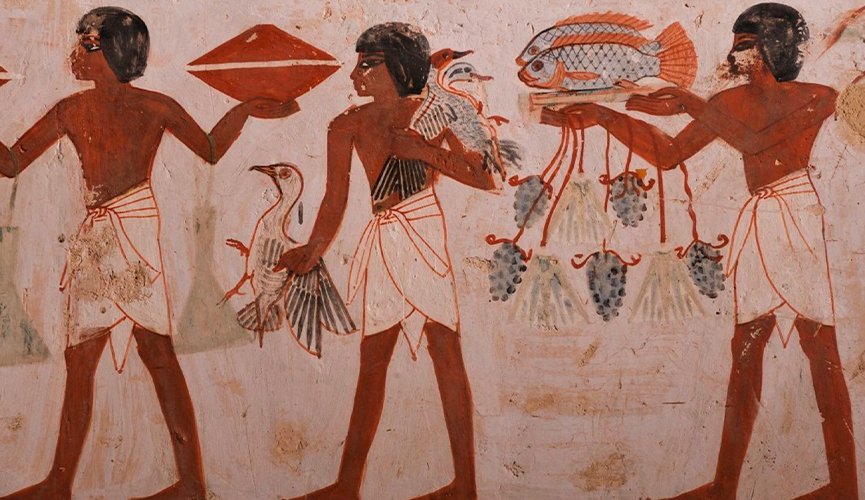
The fairs were a mix of cultural expressions and seasonal celebrations. Each was a unique fabric that brought together the strings of custom, farming, and community ties.
Shemu Festival: Bounty of the Harvest and Tributes to Min
The Shemu Festival was the culmination of months of hard work and waiting. As the fields moved in the breeze, it was clear that everyone was happy. This event was held during harvest to honor Min, the God of crops and growth. In processions filled with gifts, people thanked God for the richness of the land and asked for blessings for the coming crops.
The Festival of the Beautiful Reunion: Uniting Humanity and the Divine
The Festival of the Beautiful Reunion went beyond the limits of human life when the gods and goddesses held each other in a holy hug. This giant party, which took place in Memphis, was a sign of how well the divine and human worlds work together. The elaborate rites and songs demonstrated the belief that the event served as a link between the holy and the earthly, the spiritual and the real.
Festivals of Trade and Commerce
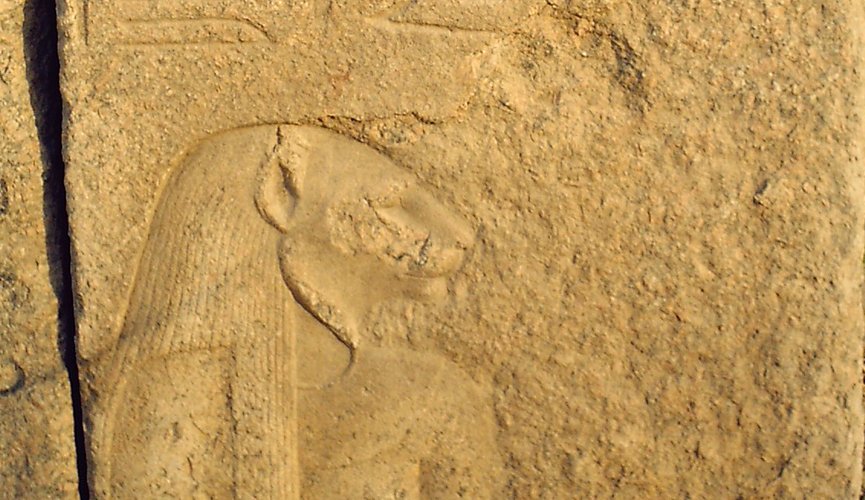
Beyond the world of the holy and the heavenly, ancient Egyptian holidays also welcomed the busy spirit of trade and commerce, turning cultural gatherings into lively markets where people could buy and sell goods.
Bubastis: Cats, Music, and Merriment in Honor of Bastet
The Festival of Bastet was held in the busy city of Bubastis. It was a wonderful mix of worship and fun. People celebrated Bastet, the cat goddess of home, fertility, and protection. The air was filled with beautiful music, and colored processions danced through the streets. Amid all the happy noise, the event also allowed for a lively exchange of goods and wares, as traders took advantage of the chance to do some energetic business.
The Sinai Festival: A Confluence of Cultures and Commerce
The Sinai Festival showed how different cultures and the busy energy of trade can come together. It was held at a place where old trade lines met. As people worldwide came to the fair, the dry land became a bustling marketplace where goods, ideas, and cultures mixed. During the celebrations, the ancient Egyptians paid their respects to Hathor, the goddess of trade and music, who was kind and helped people trade tangible and intangible goods.
Royal Festivals
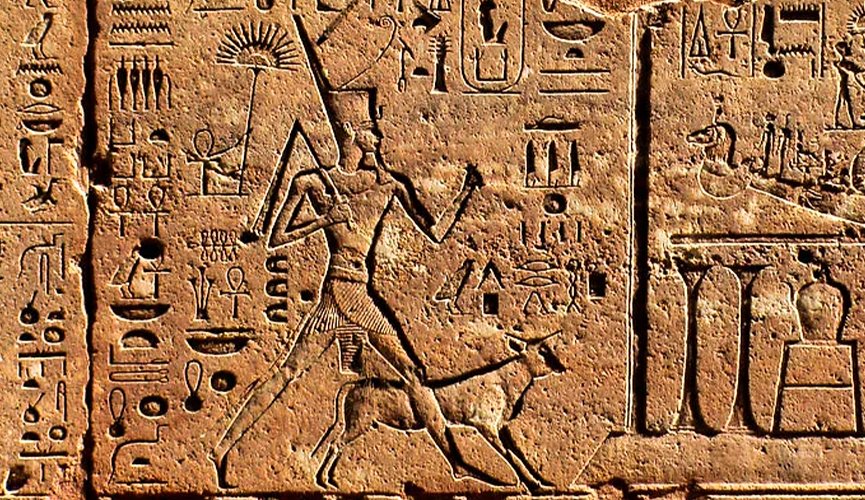
Egypt’s royal family wasn’t just wealthy because they had big houses and golden thrones; they were also grand because they had events that praised their power and greatness.
Sed Festival: The Monarch’s Jubilee and Renewed Authority
The Sed Festival was a big deal. It was the pharaoh’s jubilee, celebrating his long reign and restored power. Through several complicated rites and symbolic actions, the king confirmed his divine calling and the unbreakable link between the crown and the universe. The holiday he marked both the passing of time and the fact that pharaonic power will always be there.
The Coronation Festivities: Anointing the Pharaoh with Splendor
The crowning of a king was more than just a ceremony; it was a spiritual event that brought together the worldly and the heavenly. During the Coronation Festivals, the king was blessed and dressed in symbols of power. This was a big show with a lot of pomp. During prayers and spells, the king was turned into a live god who connected the human world and the heavens.
Rituals and Ceremonies
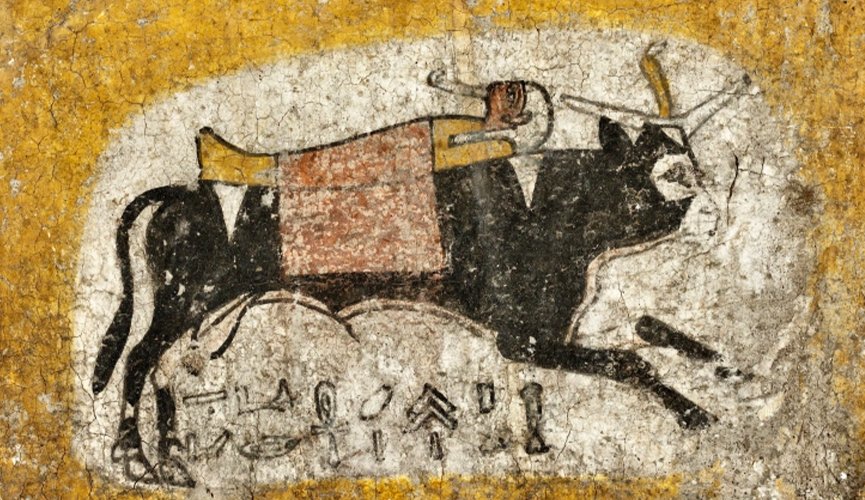
At the heart of these celebrations were complex rites and events that shaped the story and meaning of each one, weaving together the everyday and the holy.
Offering to the Deceased: The Intimate Festival of the Valley
The Festival of the Valley was a close connection between the living and the dead in the Valley of the Kings. Families met at the tombs of their relatives with gifts and emotional memories. In the shimmering light of torches and the smell of incense, the living paid tribute to the dead, confirming the unbreakable link beyond death.
Apis Bull Festivals: Honoring the Sacred Living God of Egypt
The Apis Bull stood out among the many gods because he was a live god who walked the Earth. Apis was a god, so the events held in his honor showed how holy he was. The majestic bull was taken through the streets in long parades decorated with many little details. This allowed the people to see how beautiful the holy animal was.
Legacy and Influence of Ancient Egyptian Festivals
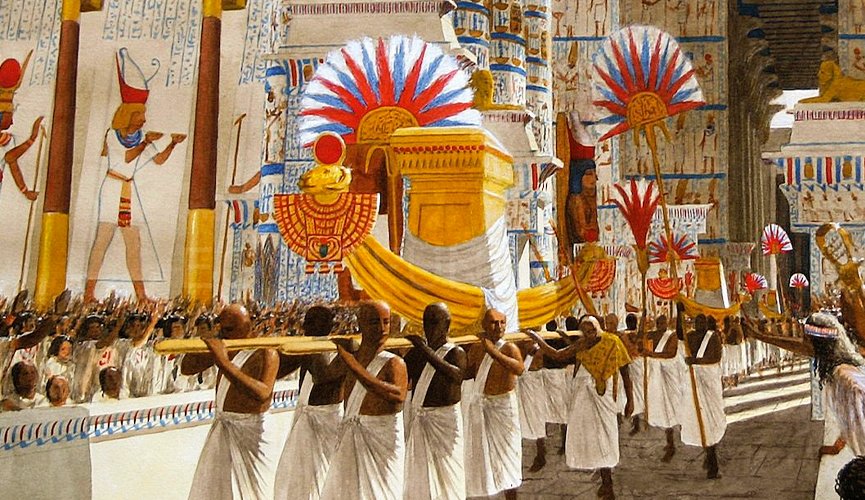
The sounds of these old parties can still be heard today, and they have left a lasting mark on modern ways of expressing culture and celebrating. Their lasting impact inspires and fascinates us, telling us of the deep ties that bind people together through the ages.
- Echoes of the Past: Traces of Ancient Egyptian Festivals Today: Even though the last sounds of old songs have been gone for thousands of years, they can still be found in the habits and practices of modern Egypt. From the lively beats of music to the busy activity of markets, glimpses of the past are woven into the fabric of current events.
- Inspiring Modern Celebrations: Reviving Ancient Traditions: In the spirit of preserving culture and paying respect, modern Egypt honors its ancient past by returning to and reworking these old events. Festivals that keep old gods alive, call to mind cosmic rhythms, and celebrate community ties continue to grow, giving old customs new life.
Conclusion
Ancient Egyptian Festivals have a charm that goes beyond time. They make us want to cross the sands of time and step into a world where gods and humans dance harmoniously. The festivals showed that people have always wanted to connect with the universe and the gods who held the answers to life’s riddles. They did this through elaborate rites, colorful processions, and community celebrations. When we look back at the rich weave of these celebrations, we see how the lessons of the past have made us better people and how we can use them in our celebrations.

